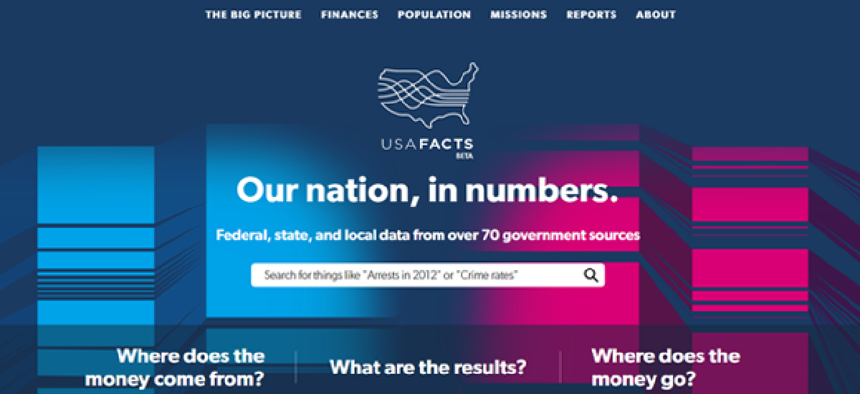Digging into government spending data

Launched by former Microsoft Chairman Steve Ballmer, USAFacts.org offers a data-driven look at federal, state and local government spending.
Former Microsoft chairman Steve Ballmer has turned his attention to government spending data and launched the USAFacts.org, a website that shows how tax money is spent.
USAFacts.org offers a “data driven portrait of the American population, our government’s finances, and government’s impact on society” based on federal, state and local data, the site said. It includes financial reports modeled on the quarterly and annual financial 10-K disclosure statements public companies file with the Securities and Exchange Commission.
The USAFacts Institute that built the site plans to keep updating the data and to expand the site’s data visualizations, machine learning features and third-party support. Ballmer has spent more than $10 million between direct funding and grants to launch the site and expects to invest “three, four, five million a year” maintaining it, he told the New York Times.
Sunlight Foundation Deputy Director Alex Howard commended Ballmer's effort to join the transparency movement, but he noted that the project seems curiously disconnected from official open data projects and the coming disclosures of federal financial activity required under the Data Act.
"It doesn't seem like Mr. Ballmer talked to people in Washington and in the open government community writ large about what existed already and what would be useful," Howard said.
Ballmer's site combines data from all levels of government to give a complete picture of government spending, government employment and other data.
"The contention is that federation is the difference" between Ballmer's database and other transparency projects, Howard said, adding, "I am skeptical of that claim."
Additionally, Howard pointed out that the site did not publish its data in an open, reusable format.
"The copyright notice at the bottom of the page does not give me hope around permissiveness," he said, contrasting Ballmer's project to the 2014 Data USA data visualization project from the Massachusetts Institute of Technology.
"It is surprising to me it was not open from the beginning," he said. "My experience tells me that if you are not open from the beginning, it's hard to go back and fix it."
Eric Gilliespie, founder of Govini, a contracting intelligence tool that relies on government data, praised the effort.
"Government data is a dark, scary basement into which few actually venture," Gillespie told FCW in an email. "Any effort to improve transparency, especially in a political environment of constantly disputed facts, should be lauded. My hope is that Steve's initiative will serve as a flashlight for those brave souls who trundle down the stairs in search of data-based facts over emotion-based rhetoric," he said.
Executive Director of the Data Foundation Hudson Hollister said that Ballmer's project is "the first time someone has taken the breadth of data sources" to put this scale of federal, state and local financial data in one place.
The $10 million spent on the effort, Hollister pointed out, "is in the same range the government itself has spent to try to transform its own information … into open data."
However, he cautioned against thinking about the site as a "management tool."
"Agencies cannot use USAFacts.org to manage to their missions or manage to their functions," he said. As of now, Hollister said, "this is more like an interactive report" than a "data resource," adding that the site "is not a data platform. It's an aggregation platform."
On that front, Hollister did point out that 2014 Data Act requires agencies to report their financial data to USASpending.gov, which a data transparency team from the Department of Treasury has been working on since the law's passage.
Hollister noted that the DATA Act's first submission deadline in May will provide the USAFacts.org site with access to greater, more granular financial detail. That data, which connects the dots on federal spending from the appropriations process through agency expenditure, is scheduled to be published for public use on USASpending.gov.





